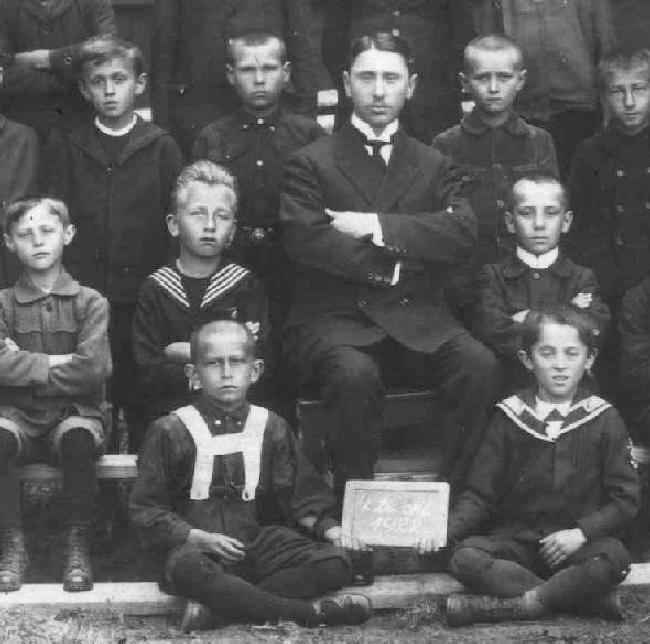
Figure 1.--This is the Smiricích School in 1922. Smiricích is a Czech village about 120 km east of Prague. It seems a typical Czech village school. The boys seemed dressed similarly to German children.

This is the Smiricích School in 1922. Smiricích is a Czech village about 120 east from Prague. It seems a typical Czech village school. The boys seemed dressed similarly to German children. Note the boy with the H-bar attachment. We note boys commonly wearing suspendars before World War I. After the War we note boys beginning to wear suspendar pants with the suspendars bars in the same material as the pants. We also notice H-bar pants. This style seems to have been especially common in central Europe (Austria, Germany (especially Bavaria), Czechoslovalia, and Hungary). We assume that the style beside its praticality was influnced by the popularity of Lederhosen in Austria and Bavaria. The boy here wears the H-bar attachment rather as a Lederhisen halter. This is an early appearance of the style. They are done in an obvious different material and not sewn on the pants. A reader writes, "This photograph is interesting. Note the boy in the extreme right foreground who is wearing a very wide white supender-halter garment with a crosspiece across the chest. It appears to be buttoned to his long short pants (long enough to resemble knee pants). I have never seen a German-style halter with straps this wide or in the unusual color of white." Yes this boy does stand out. Not only the H-bar halter. Also notice the strap shoes he is wearing. The other boys are either barefoot or wearing heavy-bootlike shoes. You get the impression that this boy may have had an especiazlly fashion conscious mother.
This is the Smiricích School in 1922. Smiricích is a Czech village about 120 east from Prague. It seems a typical Czech village school. Czechoslovakia at the time had just emerged from the Austro-Hungarian and was a newly independent country.
The boys seemed dressed similarly to German children. Note the boy with the H-bar attachment. We note boys commonly wearing suspendars before World War I. After the War we note boys beginning to wear suspendar pants with the suspendars bars in the same material as the pants. We also notice H-bar pants. This style seems to have been especially common in central Europe (Austria, Germany (especially Bavaria), Czechoslovalia, and Hungary). We assume that the style beside its praticality was influnced by the popularity of Lederhosen in Austria and Bavaria.
The boy here wears the H-bar attachment rather as a Lederhisen halter. This is an early appearance of the style. They are done in an obvious different material and not sewn on the pants. A reader writes, "This photograph is interesting. Note the boy in the extreme right foreground who is wearing a very wide white supender-halter garment with a crosspiece across the chest. It appears to be buttoned to his long short pants (long enough to resemble knee pants). I have never seen a German-style halter with straps this wide or in the unusual color of white." Yes this boy does stand out. Not only the H-bar halter. Also notice the strap shoes he is wearing. The other boys are either barefoot or wearing heavy-bootlike shoes. You get the impression that this boy may have had an especiazlly fashion conscious mother. A reader writes, "I think the point about a fashion-conscious mother is likely true. Another thing is that the style looks vaguely military, like something worn by a 19th century soldier."
HBC sees a substantial Germwn/Austrian fashion influence here. Czechoslovakia for centuries was ruled by the Austrian Hapsburgs. The massive Germany economy was a nother factor. A HBC reader, however, writes, "I think it's wrong to tie it too much to German influence. The style was popular not only in Central Europe but throughout Eastern Europe. I've seen them from Finland to Georgia, including many places not exactly sympathetic to Germans. I think that the idea of that kind of suspension had spread far (from wherever it originated), and by the 20th century it had no national connotations in the minds of moms. It had become part of the folk culture."
Navigate the Boys' Historical Clothing Web Site: Navigate the Boys' Historical Clothing Web Site:
HBC
[Return to the Main Czechoslovakian page]
[Introduction]
[Activities]
[Biographies]
[Chronology]
[Clothing styles]
[Countries]
[Topics]
[Bibliographies]
[Contributions]
[FAQs]
[Glossaries]
[Satellite sites]
[Tools]
[Boys' Clothing Home]
[Return to main country page]
[Australia]
[Canada]
[England]
[France]
[Germany]
[Ireland]
[Italy]
[New Zealand]
[Scotland]
[United States]
Crerated: 5:40 PM 4/26/2005
Last updated: 10:09 PM 4/27/2005
